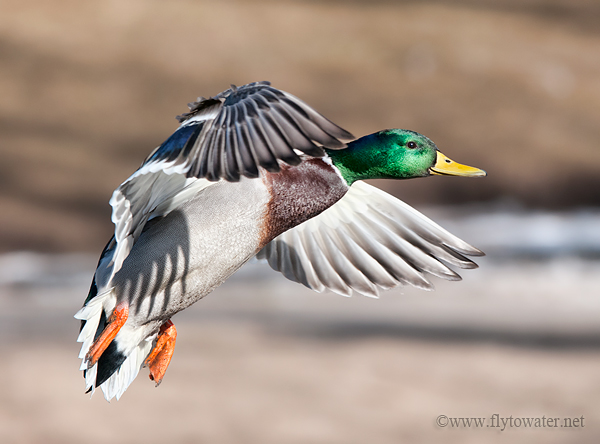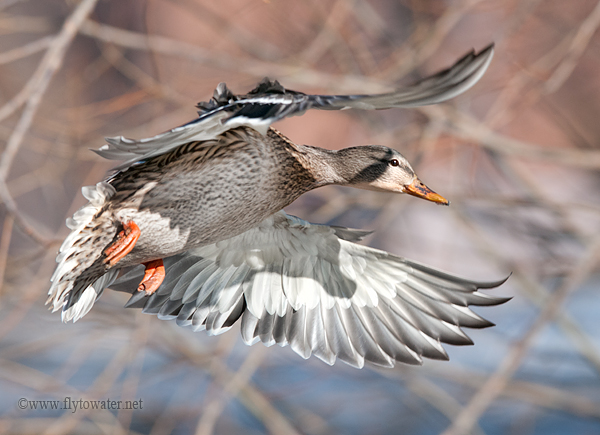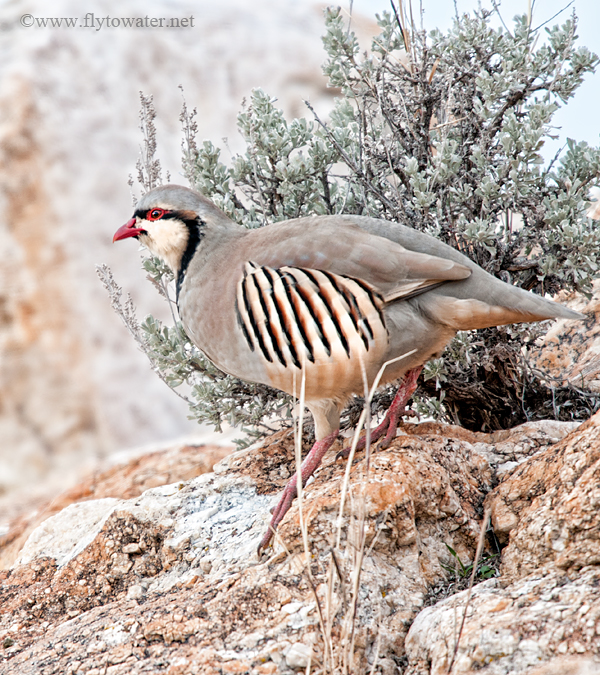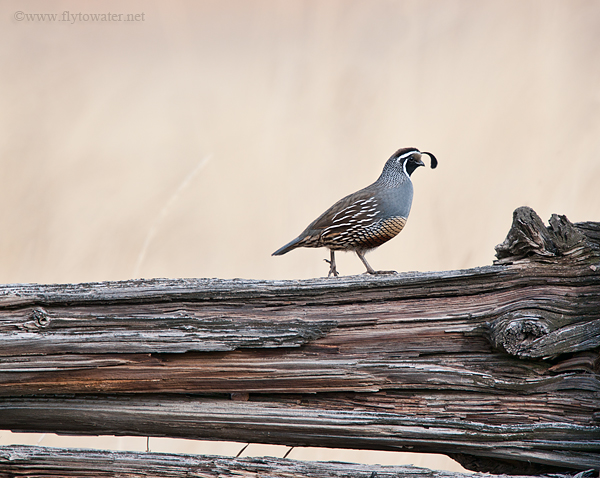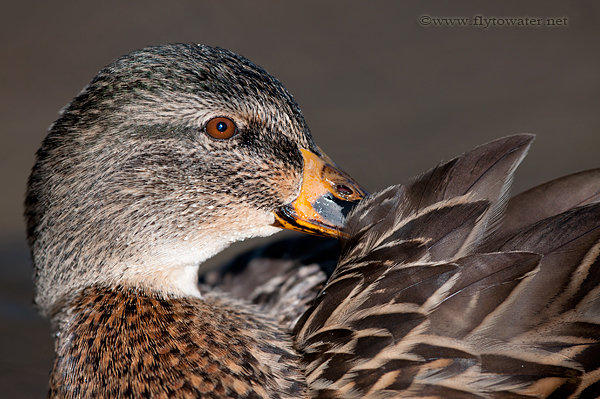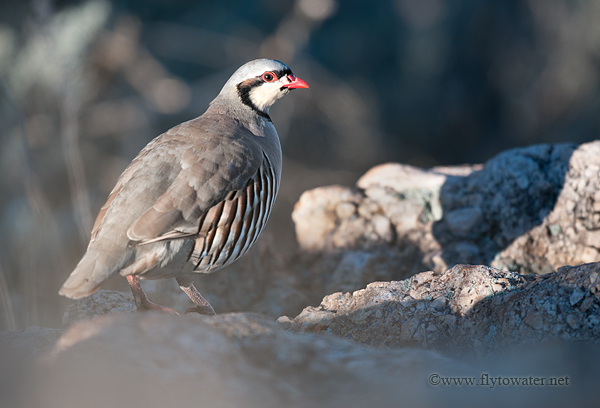"Look at me when I'm talking to you!"
If you are a guy of they XY chromosome persuasion, chances are you have had this type of exclamatory remark flung in your direction. Due to a vast conspiracy between extroverts and chick flick producers, eye contact became an important, non-verbal communication element at some point in history.
While information technology professionals have been fighting this alarming and intrusive trend for decades via non-violent, downward gazing - such efforts have done little to stop the insanity.
Looking into the eyes establishes a connection. Similar body language is evident even in animals, where the direction of a stare or glance can have much deeper social meaning.
In wildlife photography, creating a linkage between the viewer and the image is paramount. Eyes are a critical component of the subject in this regard. Aside from intentional, artistic abstractions - successful images must capture the eye in sharp focus and without motion blur. This remains true regardless of distance and whether you are capturing a tight shot or broader environmental portrait.
It can be Hell's own fun tracking focus on the eye of a fast-moving bird while experiencing a fit of the galloping shivers. It's a perishable skill that takes practice. If you're looking to improve your technique, my suggestion is to find a location with a lot of mid-sized birds like seagulls which tend to congregate in groups and fly around in circular patterns. Use the same gear you take into the field, and rehearse focusing on the eye. You might get some odd looks bombing photos of gulls, but it's a small price to pay to avoid the opprobrium of eye blur when it counts.
Don't settle, like Kate Hudson did for Chris Robinson. If your intent is not an abstraction of some kind - the eye simply needs to be sharp. Make sure not to confuse missed focus with motion blur caused by a shutter speed which is too slow. Waterfowl will usually have some wing blur at 1/1250, with action freezing well at 1/1600. As a starting point select the camera's shutter priority mode on one of these two settings and adjust as conditions require.
Happy Holidays - and thanks for reading during 2011! I wish everyone a fantastic New Year.
Nikon D300
Nikon 400mm f/2.8 VR - f/5.6, 1/1600 (8x Optical Magnification) - Hand Held
ISO 400
Distance to Subjects: 20 yards/60 Feet
Monday, December 26, 2011
Saturday, December 3, 2011
Quote the Chukar
The chukar partridge (Alectoris chukar), is so named due it's distinctive call which sounds like "chuk." Native to locations in Asia such as the Himalayas and Nepal, it should come as no surprise that these little birds enjoy rugged terrain.
To describe the habitat chukars prefer as "steep" is to say that getting kicked in the gonads is bothersome. Somehow it doesn't adequately sum up the experience.
Hunters and photographers of these partridge can also be identified by their calls, which happen to rhyme with "chuk." It has been said that a person hunts chukars for the first time out of curiosity, and thereafter for revenge.
To me, no other game bird embodies the qualities of a survivalist quite like them. Living in the high desert foothills is a game of extremes. Water and food are scarce, and predators abound. The chukar is well suited to a harsh life, and is tremendously challenging to photograph.
Infiltrating a covey with 20+ sets of keen eyes, each pair honed by daily existence as a prey animal, can be an exercise in futility. Add rocky, vertical geography to the mix and it's downright sporty. If those were the only considerations involved, life would be good. Unlike the hunter, the photographer also needs to make it all happen during ideal lighting conditions and be positioned on the sunny side of the bird as the opportune moment arrives.
A truly complete image is rounded out by some supporting environmental elements within the frame, helping to add context to the scene.
To describe the habitat chukars prefer as "steep" is to say that getting kicked in the gonads is bothersome. Somehow it doesn't adequately sum up the experience.
Hunters and photographers of these partridge can also be identified by their calls, which happen to rhyme with "chuk." It has been said that a person hunts chukars for the first time out of curiosity, and thereafter for revenge.
To me, no other game bird embodies the qualities of a survivalist quite like them. Living in the high desert foothills is a game of extremes. Water and food are scarce, and predators abound. The chukar is well suited to a harsh life, and is tremendously challenging to photograph.
Infiltrating a covey with 20+ sets of keen eyes, each pair honed by daily existence as a prey animal, can be an exercise in futility. Add rocky, vertical geography to the mix and it's downright sporty. If those were the only considerations involved, life would be good. Unlike the hunter, the photographer also needs to make it all happen during ideal lighting conditions and be positioned on the sunny side of the bird as the opportune moment arrives.
A truly complete image is rounded out by some supporting environmental elements within the frame, helping to add context to the scene.
Some native grasses in the foreground, sage brush in the immediate background, and the ever-present rocks so common to a chukar's stomping grounds help complete the story.
Distance to Subject: 45 Feet/15 Yards
Wednesday, November 30, 2011
Taking to the Valley
No religious extremist has ever been as fanatical about a concept as quail are over the posting of sentries. In covey society, forgetting to have someone stand guard is like wearing an argyle sweater vest - it's the unthinkable. Spanish Inquisitors took Christianity far less seriously, and appear slapdash in comparison to the diligence of these feathered lookouts.
Where I live, quail are somewhat of a dichotomy because they adapt well to urban settings. In residential areas birds are semi-tame as they move from feeder to feeder, pausing only to avoid the occasional obese house cat crossing their path. As subjects of photography, these city dwellers are far from ideal. Photos of game birds perched on a Prius or crossing a well-manicured lawn don't represent the proper wild, upland heritage.
Unfortunately for me, quail living in a rural setting are more paranoid than a methamphetamine addict that's just downed a double espresso and Red Bull frappé. Constantly contending with numerous raptors, coyotes, bobcats, skunks, racoons, snakes, and other predators - the wild variety invariably appear to be on the verge of a psychotic break.
Upon seeing a hominid in the distant atmospheric shimmer, a rural quail's eyes will protrude slightly out of the head and cause a jolt of adrenaline to surge to the wings. Any attempt to approach to within 100 yards will result in the wholesale evacuation of the premises.
Last year I scouted a really nice farm that had both a healthy quail covey and some classic upland habitat including some fences made of nicely weathered wood. My hope was to get a few shots of these birds in an iconic setting, but despite making 4 separate attempts, the covey never let me get closer than a football field. Even with a long lens, my operating distance on a subject this size is about 25 feet. I wasn't even in the ballpark.
Last weekend I visited the location again. It's a 2-hour round trip, so I had now driven a total of about 10 hours and this was my 5th day in what had so far been a fruitless attempt to stalk this group of quail. I was immediately excited as I glassed an area and saw my quarry disappearing behind a 4-foot-high fence. This was the obstacle I needed to screen my approach from the watchful eyes of the 20 covey members. In full camo and in max stealth mode I performed what I thought was a flawless stalk and got into position. Somehow they busted me yet again! I can only surmise they heard me, but upon peeking around the fence all the birds were in the air 200 yards away heading for an immense field of cattails...
Except one. The sentry male had taken up the rear guard position, perched on a section of broken fence. In a fleeting moment of opportunity I made a digital copy of him from about 25 feet away. I was glad to finally glimpse this this well-dressed gentleman through the viewfinder.
Where I live, quail are somewhat of a dichotomy because they adapt well to urban settings. In residential areas birds are semi-tame as they move from feeder to feeder, pausing only to avoid the occasional obese house cat crossing their path. As subjects of photography, these city dwellers are far from ideal. Photos of game birds perched on a Prius or crossing a well-manicured lawn don't represent the proper wild, upland heritage.
Unfortunately for me, quail living in a rural setting are more paranoid than a methamphetamine addict that's just downed a double espresso and Red Bull frappé. Constantly contending with numerous raptors, coyotes, bobcats, skunks, racoons, snakes, and other predators - the wild variety invariably appear to be on the verge of a psychotic break.
Upon seeing a hominid in the distant atmospheric shimmer, a rural quail's eyes will protrude slightly out of the head and cause a jolt of adrenaline to surge to the wings. Any attempt to approach to within 100 yards will result in the wholesale evacuation of the premises.
Last year I scouted a really nice farm that had both a healthy quail covey and some classic upland habitat including some fences made of nicely weathered wood. My hope was to get a few shots of these birds in an iconic setting, but despite making 4 separate attempts, the covey never let me get closer than a football field. Even with a long lens, my operating distance on a subject this size is about 25 feet. I wasn't even in the ballpark.
Last weekend I visited the location again. It's a 2-hour round trip, so I had now driven a total of about 10 hours and this was my 5th day in what had so far been a fruitless attempt to stalk this group of quail. I was immediately excited as I glassed an area and saw my quarry disappearing behind a 4-foot-high fence. This was the obstacle I needed to screen my approach from the watchful eyes of the 20 covey members. In full camo and in max stealth mode I performed what I thought was a flawless stalk and got into position. Somehow they busted me yet again! I can only surmise they heard me, but upon peeking around the fence all the birds were in the air 200 yards away heading for an immense field of cattails...
Except one. The sentry male had taken up the rear guard position, perched on a section of broken fence. In a fleeting moment of opportunity I made a digital copy of him from about 25 feet away. I was glad to finally glimpse this this well-dressed gentleman through the viewfinder.
Labels:
Bird,
California,
Game,
Photography,
Quail,
Upland,
Valley
Monday, November 28, 2011
Preening
Preen - transitive verb
I couldn't help but notice in the process of capturing this image of a preening mallard hen that a rather impatient-looking drake was paddling back and forth a short distance away. In the land of ducks, he was essentially in the formal entry checking his watch every 30 seconds because his reservations at the corn field clear across town were in 10 minutes. Of course he had shown up half an hour earlier at the agreed upon time, but had failed to take into account that preening can only begin upon his arrival. Few things, after all, are more deflating to a lady than a stale preen job.
I was fortunate to have this hen swim very near to me during a window of wonderful light on Saturday. The distance to her from the end of my camera lens was perhaps 6 feet. Shooting at 8x optical magnification, what you see here filled the frame.
After she was all primped:
- To dress or smooth oneself - to primp.
- To groom
- A tactic used by the female in a dating arrangement to grievously delay commencement of an evening's planned activities - to lag.
I couldn't help but notice in the process of capturing this image of a preening mallard hen that a rather impatient-looking drake was paddling back and forth a short distance away. In the land of ducks, he was essentially in the formal entry checking his watch every 30 seconds because his reservations at the corn field clear across town were in 10 minutes. Of course he had shown up half an hour earlier at the agreed upon time, but had failed to take into account that preening can only begin upon his arrival. Few things, after all, are more deflating to a lady than a stale preen job.
I was fortunate to have this hen swim very near to me during a window of wonderful light on Saturday. The distance to her from the end of my camera lens was perhaps 6 feet. Shooting at 8x optical magnification, what you see here filled the frame.
After she was all primped:
Sunday, November 27, 2011
To Flush or not to Flush
...that is the question.
Shooting through foliage is usually not ideal, but chukar partridge are fiendish birds with a natural inclination toward sneakiness. It is not uncommon for a photographer to make loud, rattling sounds with the throat that carry at least as far as alpine yodels after being very close to a large covey and getting no shots whatsoever.
The unpredictability of wild subjects will at times preclude the ability to move and recompose. In these cases, foreground foliage can be used as an element to draw the viewer to an area of crisp focus. When using this technique, it's critical to achieve a high amount of detail in the area of interest. Catch light in the eye and sharpness throughout the bird's mask and head grab attention, while also leaving something to the imagination.
Despite spending the morning in the general proximity of around 40 birds, this was the only opportunity that panned out. I'll be chasing them again.
Sunday, November 13, 2011
Nothing but Net
For about the last quarter century Wachter has been cranking out hand-made fly fishing nets down in St. Paul, Texas. About 2 years ago I was poking around online looking for a combination of features that I hadn't found locally.
This has turned out to be my all-time favorite net. The proportions were ideal - perfect for extra reach on the pontoon, but short enough that it easily holsters in a wading belt without getting in the way. The PVC net bag is sufficiently rigid to avoid twisting, and it's easy on the fish. Wachter also has a new MRB (Molded Rubber Bag) option in addition to their injection-molded PVC that's lighter and more flexible.
Actually I don't even get to fish with my Magnum Pontoon about half the time, because anglers are an unscrupulous lot who think nothing of snatching up a companion's net and darting off at speeds that risk a groin pull.
Since my initial purchase, I've since added a couple more of these beautiful nets to the gear bag. Plenty of custom woods and options are available.
Engraving:
Scrimshaws:
Measuring dots every 2-inches on the longer handles:
A variety of woods like this maple burl:
UV-protected, 6-step marine-grade finish:
Net prices start at $60 for the Outfitter series, and both Guide and Master grades are offered. You can order a completely custom net, or take a look at models which are available for purchase immediately here:
In Stock Wachter Nets
If you get one, choose your fishing buddies carefully.
- I wanted a mid-length handle. It needed to be longer than all the typical trout nets made to hang neatly from the back of a fishing vest, but not as long as the usual boat style.
- My goal was to find a slightly over sized hoop without infringing on portability.
- The bag needed to be tangle-free, hook resistant, and difficult for a fish to twist while netted.
- An individual look rather than a sterile, manufactured appearance - but without being too expensive.
- Made in the USA.
This has turned out to be my all-time favorite net. The proportions were ideal - perfect for extra reach on the pontoon, but short enough that it easily holsters in a wading belt without getting in the way. The PVC net bag is sufficiently rigid to avoid twisting, and it's easy on the fish. Wachter also has a new MRB (Molded Rubber Bag) option in addition to their injection-molded PVC that's lighter and more flexible.
Actually I don't even get to fish with my Magnum Pontoon about half the time, because anglers are an unscrupulous lot who think nothing of snatching up a companion's net and darting off at speeds that risk a groin pull.
Since my initial purchase, I've since added a couple more of these beautiful nets to the gear bag. Plenty of custom woods and options are available.
Engraving:
Scrimshaws:
Measuring dots every 2-inches on the longer handles:
A variety of woods like this maple burl:
UV-protected, 6-step marine-grade finish:
Net prices start at $60 for the Outfitter series, and both Guide and Master grades are offered. You can order a completely custom net, or take a look at models which are available for purchase immediately here:
In Stock Wachter Nets
If you get one, choose your fishing buddies carefully.
Friday, November 11, 2011
11-11-11
At one time in my younger days I hunted upland birds without a dog, and consequently went about life largely unfulfilled. Part of this may have been due to the fact that my father, in response to vehement requests for a sporting breed, obtained a beagle/fox terrier mix. In the field this dog's primary talent was turning into a linear motion blur and racing off until he was concealed by the curvature of the Earth.
One can only speculate as to why Dad chose to deprive his posterity of gun dogs, when he himself was raised with a brace of Brittany Spaniels. My theory is that it had something to do with excessive intake of maple nut ice cream - a bastardized confection he purchased with reckless abandon during my childhood. Essentially the frozen dairy equivalent of fruitcake, maple nut should ideally be re-gifted during the holiday season and never consumed. Yet eat it my father did, and in so doing caused irreparable damage to the petulla oblongata, or pet-selecting portion of the brain.
Regardless, I soon reached an age when I could apply the guillotine choke when parental objections were raised and immediately set about the procurement of a proper canine companion. Dogs in the field have since become the element of upland hunting I enjoy the most.
It was great to be out on a sunny, Fall day. Thanks to the pups a few wily phez found their way into the vests along with a limit of chukars. It doesn't get much better than putting boot to cover with a 4-legged friend leading the way and a well-balanced over/under in hand. 11-11-11 worked out nicely.
One can only speculate as to why Dad chose to deprive his posterity of gun dogs, when he himself was raised with a brace of Brittany Spaniels. My theory is that it had something to do with excessive intake of maple nut ice cream - a bastardized confection he purchased with reckless abandon during my childhood. Essentially the frozen dairy equivalent of fruitcake, maple nut should ideally be re-gifted during the holiday season and never consumed. Yet eat it my father did, and in so doing caused irreparable damage to the petulla oblongata, or pet-selecting portion of the brain.
Regardless, I soon reached an age when I could apply the guillotine choke when parental objections were raised and immediately set about the procurement of a proper canine companion. Dogs in the field have since become the element of upland hunting I enjoy the most.
It was great to be out on a sunny, Fall day. Thanks to the pups a few wily phez found their way into the vests along with a limit of chukars. It doesn't get much better than putting boot to cover with a 4-legged friend leading the way and a well-balanced over/under in hand. 11-11-11 worked out nicely.
Subscribe to:
Posts (Atom)







